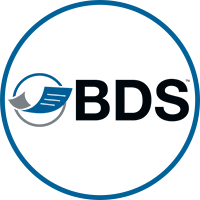There are many factors to consider when buying a printer. When making a business purchase, we tend to focus on price, design, efficiency, and most importantly, reliability. Still, there are certain specifications that we may not be familiar with that often have a significant impact on your purchase.
Often, when shopping for printers, you’ll encounter a few technical terms that you may not be familiar with. It can be intimidating, which is why it’s important to conduct adequate research. This includes asking your technicians and salesperson questions.
One term you may not be familiar with is PPM. PPM is used frequently when describing printers, especially in the specifications section.
What does PPM stand for?
PPM, also referred to as Pages Per Minute, is a measurement standard. A printer’s PPM will provide you with a general idea of how fast the speed of the printer is. PPM usually gauges the printing rate of inkjet and laser printers. With a vast collection of printers on the market, the PPM for each printer is going to be different.
More about PPM:
The PPM on a printer will provide you with the speed a printer can print a page of text in black ink. With PPM, graphics and complex images are often not calculated in the speed measurement. You can usually locate the PPM speed measurements in the printer’s technical specifications manual included with your equipment.
What you should know:
PPM sounds simple enough, but there are still considerations to explore when shopping for your new equipment.
Oftentimes, manufacturers measure the maximum PPM in the fastest printing mode referred to as “economy mode,” which is the lowest quality. Pages per minute rating doesn’t always reflect true printing speed; regular mode speed can be twice as slow. For instance, Regular print mode is twice as slow as fine/high-quality mode, which is even slower.
Furthermore, the PPM measurement doesn’t always consider the length of time it takes the printer to warm up and begin printing, meaning the warmup time will be longer than the time it will take to print the document.
How is it measured?
Manufacturers calculate a printer’s max PPM by factoring in plain text pages. Again, as a reminder, this does not include graphics, lines, or other objects that you may be looking to measure for. Printing a document containing an image will take much longer than a basic text document.
How do I determine what printer speed is necessary for my business?
Finding your printing needs can be a bit tricky, as it’s not always a perfect science. Different PPM speeds are suited for different individuals or organizations. There are a few factors that need to be explored to make the most educated decision for yourself.
We encourage you to consult industry professionals about any questions or confusion with your equipment, especially when it comes to PPM. However, be aware that when asking different professionals about what speed is right for you, you may receive conflicting advice. This is due to the different types of printers on the market with different capabilities and features, and your individual printing needs.
Some common printing factors to consider
It’s always best to be as specific as possible about your printing needs when building your requirements.
Here are some factors to consider:
- Your industry and business needs.
Different printers have different capabilities, and the last thing you want is to waste money on a printer with a higher PPM that doesn’t adequately serve your business the way a printer with a lower PPM would. You also don’t want the opposite, where you spend less money but suffer in printing quality because the PPM doesn’t match your business needs. - Page Coverage.
Page coverage will affect the volume of pages able to be printed in a minute. - Printer resolution
Printer resolution is measured based on how many dots are printed per inch (also known as dots per inch). A higher number of dots per inch will often produce higher-quality detail, providing more technical support for images and text.

Black and White PPM vs. Color PPM
With all the considerations you should explore when shopping for PPM, Black and White PPM vs. Color PPM is worth considering. There are some differences between printing with both Black and White and Color PPMs that can significantly impact your printing needs and business.
Black and White PPM considerations:
- In general, it will provide you with more pages per minute.
- For more commercial purposes, Black and white PPM can usually be printed at a higher volume.
- You can produce and print images. It’s important to be aware though, that these photos will be printed using shades of gray in place of colored images.
Color PPM considerations
- Printing in color will often be a slower print process due to the extra time needed to insert dots of colored ink on the page.
- The number of pages will likely drop to half of the pages printed using Black and White PPM
- May be more expensive
Reference Guide to PPM
Looking to see what PPM is appropriate for your business needs? We got you covered below with a quick guide to help you decide purchasing.
As a general reference, different PPMs go as follows:
- 5,000-10,000 Pages (25-35 PPM):
This PPM is usually best suited for small business offices. - 25,000-35,000 Pages (50-60 PPM):
This PPM is typically best suited for Medium Business offices, Law firms, and accountants - 50,000+ Pages (75-90 PPM)
This PPM is best for schools or towns, including larger corporations.
With this reference guide, you should feel more confident in the functionality of your equipment and your next purchase.
If you are still overwhelmed by the concept of PPM, don’t worry. BDS has you covered! We have the industry’s best business consultants and service technicians ready to assist with your printing needs, including PPM. For more information on PPM printing, be sure to check out our PPM series on our blog where we dive deeper into the intricacies of PPM printing.






